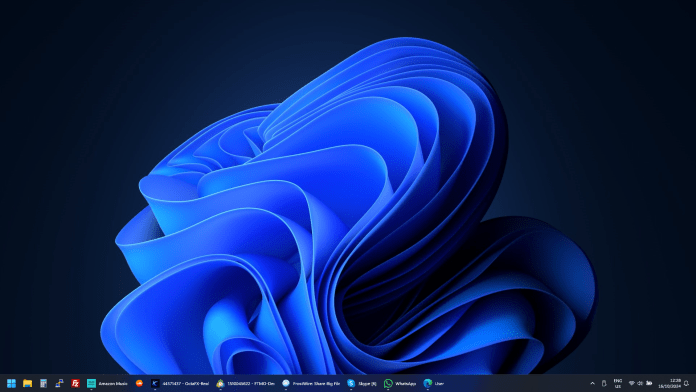Exploring the origins of Microsoft Windows is akin to unearthing a time capsule brimming with groundbreaking technology and innovation. Delving into the history of this operating system reveals its profound impact on personal computing and the broader technology landscape.
The Early Days: A Brief History of Microsoft
To grasp the origins of Microsoft Windows, we must first examine the company behind it. Microsoft was founded in 1975 by Bill Gates and Paul Allen, starting as a modest venture focused on software development for the Altair 8800 microcomputer. Their initial success stemmed from creating a version of the BASIC programming language for this machine. As the personal computer market expanded, Microsoft adeptly adapted and broadened its offerings.
In 1981, Microsoft launched MS-DOS (Microsoft Disk Operating System), which became the primary operating system for IBM-compatible personal computers. MS-DOS utilized a command-line interface, requiring users to type commands to perform tasks, which made it less accessible to the average user. Recognizing the demand for a more user-friendly operating system, Microsoft began developing a graphical user interface (GUI).
The Birth of Windows
The first iteration of Windows, Windows 1.0, was released in November 1985. Rather than being a standalone operating system, it functioned as an extension of MS-DOS. Windows 1.0 enabled users to run multiple programs simultaneously in separate windows, marking a significant advancement in usability. However, initial reception was tepid, as many users were accustomed to the command-line interface and hesitant to embrace the new GUI.
The release of Windows 3.0 in 1990 marked a turning point for Microsoft. With enhanced graphics, improved multitasking capabilities, and better memory management, Windows 3.0 gained immense popularity. During this period, Microsoft began solidifying its status as a dominant player in the software industry.
Windows 3.1 and the Rise to Prominence
The success of Windows 3.0 paved the way for Windows 3.1, released in April 1992. This version introduced several key features, including TrueType fonts, enhanced multimedia support, and improved networking capabilities. Windows 3.1 became the first Microsoft product to achieve widespread adoption in both home and business environments.
The user-friendly interface of Windows 3.1 made it accessible to a broader audience, leading to a surge in sales. By the mid-1990s, Microsoft had firmly established itself as the leading provider of operating systems, with Windows becoming synonymous with personal computing.
The Launch of Windows 95
One of the most pivotal moments in the history of Microsoft Windows occurred with the launch of Windows 95 on August 24, 1995. This operating system represented a major overhaul, combining the best features of Windows 3.1 with a new interface that included the iconic Start menu, taskbar, and minimized windows.
Accompanied by an extensive marketing campaign, including a memorable television ad featuring “Start Me Up” by The Rolling Stones, the launch generated immense excitement, with people lining up outside stores to purchase the software. Microsoft sold over seven million copies of Windows 95 within the first five weeks, setting a new record for software sales.
The Evolution of Windows: Windows 98 and Beyond
Following the success of Windows 95, Microsoft released Windows 98 on June 25, 1998. This version built upon its predecessor, offering improved performance, better hardware support, and enhanced Internet integration. Windows 98 was well-received, especially as the Internet’s importance surged during this period.
In the years that followed, Microsoft continued to release new versions of Windows, refining and expanding upon previous iterations. Windows 2000, released in February 2000, focused on stability and security, targeting business users, while Windows ME (Millennium Edition) aimed to cater to home users with enhanced multimedia capabilities.
The Advent of Windows XP
Released on October 25, 2001, Windows XP marked a significant milestone in the evolution of Microsoft’s operating system. With its modernized interface and improved performance, Windows XP quickly became a favorite among users. It effectively combined the consumer-friendly features of Windows ME with the stability of Windows 2000, making it versatile for both home and professional use.
Windows XP also introduced user accounts, allowing multiple users to share a single computer while maintaining personalized settings. This feature contributed to the operating system’s popularity, establishing it as a staple in homes and businesses worldwide.
Windows Vista and Windows 7: A Mixed Reception
The release of Windows Vista in January 2007 received mixed reviews. While it introduced several innovative features, such as a redesigned interface and improved security, many users encountered compatibility issues with existing hardware and software. This negative reception led to a decline in Vista’s adoption.
In response to Vista’s criticism, Microsoft quickly shifted its focus to developing Windows 7, released on October 22, 2009. Windows 7 addressed many of Vista’s shortcomings and garnered overwhelmingly positive reviews. It became one of the most successful operating systems to date, praised for its performance, usability, and stability.
The Modern Era: Windows 8, 10, and 11
With the launch of Windows 8 in October 2012, Microsoft aimed to create a more touch-friendly interface, reflecting the growing popularity of tablets and mobile devices. However, the radical changes were polarizing, and many users found the transition challenging. In response to this feedback, Microsoft released Windows 8.1 in 2013 to address some of the concerns raised.
In July 2015, Microsoft introduced Windows 10, which marked a return to a more traditional desktop interface while incorporating modern features. Windows 10 was designed as a service, with continuous updates and improvements rather than distinct versions, allowing Microsoft to respond more effectively to user feedback.
The latest iteration, Windows 11, was announced in June 2021 and began rolling out in October 2021. Windows 11 introduced a fresh visual overhaul, new features, and improved performance, emphasizing gaming and productivity to cater to a wide range of users.
The Legacy of Microsoft Windows
Reflecting on the origins and evolution of Microsoft Windows, it’s clear that this operating system has played a crucial role in shaping the personal computing landscape. From its humble beginnings as a graphical extension of MS-DOS to the sophisticated and versatile platform we know today, Windows has consistently adapted to meet the changing demands of users.
Microsoft’s commitment to innovation and user experience has allowed Windows to remain relevant in an ever-evolving technological landscape. The legacy of Microsoft Windows lies not only in its software but also in how it has transformed our interactions with computers and access to information.
Conclusion
The journey of Microsoft Windows is a testament to the power of innovation and adaptability. As we continue to witness advancements in technology, it’s essential to appreciate the origins of the operating systems that have paved the way for the future. Understanding the history of Microsoft Windows provides insight into its evolution and highlights its impact on individuals and businesses alike.
Whether you are a long-time user or new to the platform, the story of Microsoft Windows is a captivating narrative that reflects broader trends and changes in the technology landscape. Looking forward, I am excited to see how Microsoft continues to evolve and shape the world of computing.
<iframe width="560" height="315" src="https://www.youtube.com/embed/vqt94b8bNVc?si=kHxm1d2QgWSFlAp2" title="YouTube video player" frameborder="0" allow="accelerometer; autoplay; clipboard-write; encrypted-media; gyroscope; picture-in-picture; web-share" referrerpolicy="strict-origin-when-cross-origin" allowfullscreen></iframe>




.jpg?w=100&resize=100,70&ssl=1)
